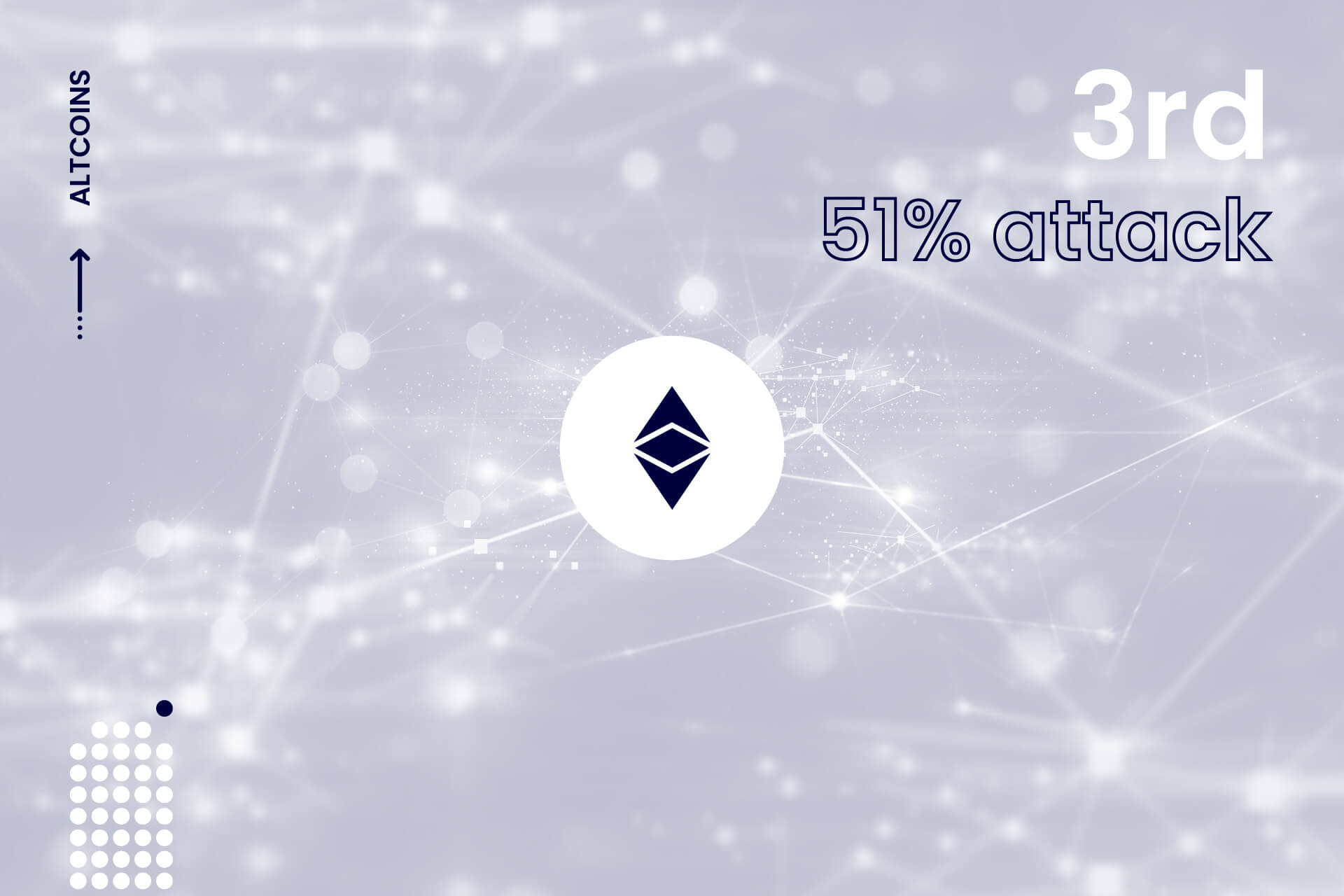
Ethereum Classic suffered another 51% attack this weekend. This is the third attack of the same kind during the month.
The 51% attack happened on Saturday, August 29, causing the reorganization of over 7.000 blocks, which matches to around two days of mining. The fact brought doubts about Ethereum Classic future, as the protocol already went through two similar attacks earlier this month.
A 51% attack refers to a chain reorganization attack on a blockchain network. It happens when a single miner or the organization takes control over more than 50% of the network’s mining hash rate or computing power. The majority of the mining power then allows the attacker to reorganize transaction blocks, halt the transactions from being confirmed, or even reverse the already completed ETC transactions.
The incident was first reported by blockchain technology company Bitfly. According to its tweet, the reorganization affected over 7000 blocks, that will be removed from the balance. The company behind the mining pool of Ethereum Classic promised to check all pay outs for dropped taxes:
The Ethereum Classic team later confirmed the attack, suggesting miners, exchanges, and other service providers to keep confirmation requirement levels above 7K until the case is completely solved.
Ethereum Classic is a decentralized blockchain designed for building and deploying the decentralized applications. It is the original version of the pre-forked Ethereum blockchain, that operates on the Proof of Work (PoW) protocol and supports its native ETC cryptocurrency.
The third and biggest attack against Ethereum Classic comes a few weeks after the two sequential attacks on August 6 and August 1, which reorganized 3.693 and 4.000 blocks respectively.
Sponsored
The carefully planned attacks exploited the protocol by creating private transactions inserted into the blocks and sending funds to the attacker’s intermediary wallets. The blocks that held the transactions were invisible to the network for some time, during which the funds were transferred further to the exchanges and later withdrawn. However, as the blocks were finally published, they lacked the transactions to the exchanges only holding the ones with the transfers to the attacker’s wallet.
Ethereum Classic future unclear
The latter attack occurred just days after the ETC developers announced the upcoming long-term changes to the network’s architecture in order to avoid further attacks.
However, before the third attack, some cryptocurrency exchanges already expressed their concerns about the Ethereum Classic. One of them, OKEX even warned to delist ETC from the trading platform if the network won’t implement protocol upgrades.
Another cryptocurrency exchange KuCoin delisted Ethereum Classic from margin trading right away the second attack. Meanwhile, the leading crypto exchange Coinbase reacted to the incident by increasing the ETC confirmation time up to two weeks.
Despite a possible threat of being delisted on various digital asset exchanges, the price of Ethereum Classic doesn’t seem to be significantly affected. The asset trades at around $6.72 at the time of publishing, which is slightly higher compared to the $6.55 price that occurred on the day of the incident.
